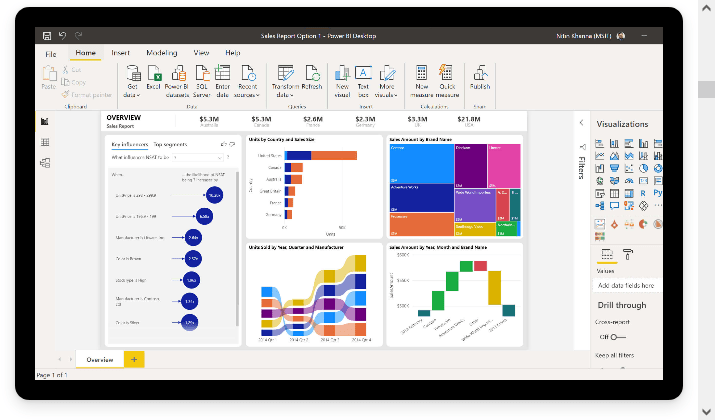Sisense and Power BI are common tools known for their business intelligence capabilities.
It may be difficult to determine which one to employ for your project, but that’s about to change shortly.
I will tackle the differences between the two platforms and help you select the appropriate one for your needs.
This Power BI and Sisense comparison is meant to give you all the information you need about the different features, functions, pricing, among others.
Let’s dig in.
What is Sisense? What is Power BI?
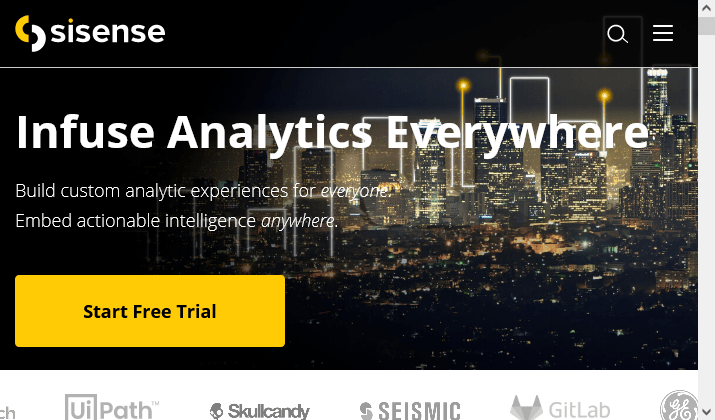
Sisense is a popular business intelligence (BI) tool that enables companies to analyze and develop relevant business trends for large and diverse datasets.
Its simple drag-and-drop and scalable end-to-end BI procedures help prepare, analyze, and visualize various complicated datasets fast, making business intelligence (BI) analytics simple.
Even businesses with low IT resources and no experience with big data may now analyze gigabytes of data and serve a large number of consumers with a single commodity server.
Sisense works with Hive; the Big Data Analytics Data Warehouse System. It is a developer tool, though, and not a business user tool: queries are made in a language like SQL.
Furthermore, while Hive scales well, query time typically takes hours.
Here are some of the things Sisense can do:
- It allows you to gather data from a variety of sources and consolidate it into a single repository.
- Innovative analysis can be generated using the app’s visual solid reports.
- It allows you to share your findings with your colleagues and clients.
- It offers a user-friendly interface that non-techies can rapidly learn.
- Sisense is also a fast system because it takes advantage of 64-bit computers, parallelization, and multi-core CPUs.
- With the help of the best cloud analytics platform, you can harness the power of analytic infusion.
- The one thing we mention in our Sisense evaluations is that you can quickly incorporate Sisense into your on-premise and SaaS applications utilizing the software’s REST API.
Explore where Sisense stands against the likes of Tableau.
Next, I’ll talk about Power BI and what it can help you do.

Microsoft’s Power BI is a technology-driven business intelligence solution for analyzing and displaying raw data to give actionable insights.
It brings together business analytics, data visualization, and best practices to assist you in making data-driven decisions.
Due to the features of the Power BI platform, Gartner named Microsoft the Leader in the “2019 Gartner Magic Quadrant for Analytics and Business Intelligence Platforms” in February 2019.
Here are the things Power BI can do:
- Power BI is a powerful tool that is very simple to use.
- It is comprehensive in scope and covers all aspects of business analytics.
- Reduces the overall cost of ownership
- Since it consolidates data in one location, it provides a single version of the truth.
- Assists you in dealing with data that is both complex and divergent.
- Traditional BI is no longer hampered because significant data analysis no longer necessitates the use of many tools.
- Reduces the workload on the IT department because complex data does not necessitate a large number of IT resources.
Check out these courses if you want to get trained and certified in Power BI.
Sisense vs Power BI
Up to this moment, you have learned one or two things about Sisense and Power BI and what they can do.
Both tools are excellent business intelligence software used by large and medium business enterprises.
However, these tools possess different features that make them unique.
Let’s get into the comparisons of these tools.
Explore this interesting comparison post between Power BI vs Tableau.
Sisense vs Power BI: Ease to Use
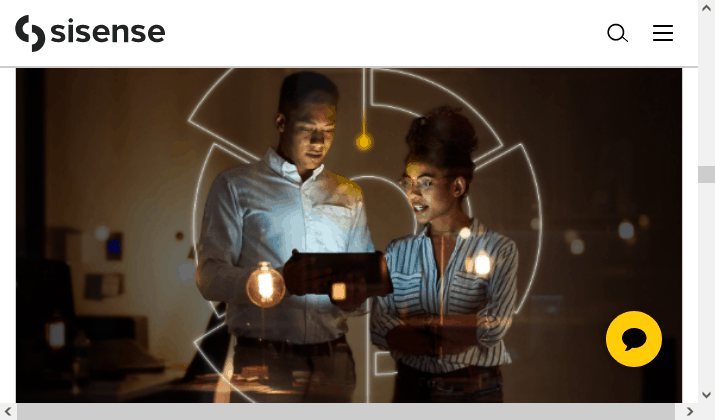
Sisense is straightforward to install and configure. It’s also straightforward to utilize both in data modeling and in the building of dashboards.
It makes it the appropriate instrument to swiftly set up dashboards for added value and start your move towards your data knowledge.
Fortunately, Microsoft Power BI does not demand users to write SQL code like other BI tools. However, if you are not a Microsoft Excel power user, it is tough to use that product.
Generally, Sisense is simpler compared to Power BI.
Sisense vs Power BI: How to Use?
Sisense has several steps in operating it. These include:
- Add data sources
- Connect different data sources
- Open the data page
- Construct the ElastiCube
- It’s time for the dashboard
- Make a whole new dashboard
- Design your first widget: Sales Trends
- To see the cost and revenue, make a scatter chart
You need to follow the following steps while using Power BI:
- Connect to data, including different data sources
- Shape the data using queries that generate informative, compelling data models
- Use the data models to build visualizations and reports
- Share your report files for others to leverage, build upon, and share. You can distribute Power BI Desktop
Sisense vs Power BI: Unique Feature Comparison
Both Sisense and Power BI have their unique features, as described below.
Sisense Unique Features
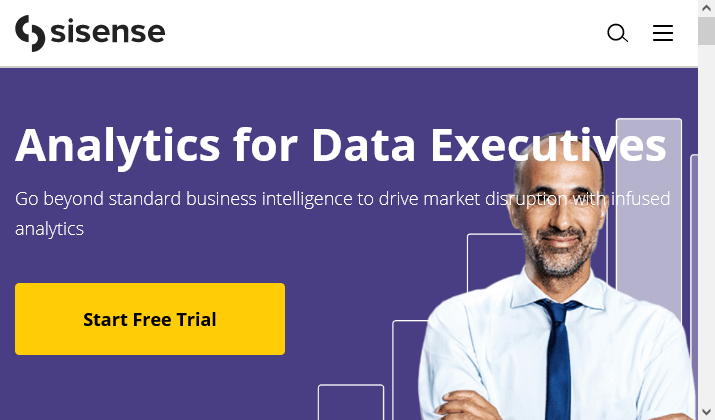
- You can export data in CSV, PDF, Excel, Images, and other formats.
- On a single commodity server, it manages large amounts of data.
- Connects to web portals
- Allows interactive terabyte-scale analytics to be delivered.
- Widgets such as gauges, charts, and graphs are available in a variety of sizes.
- A visualization that catches the eye
- Data is filtered by dragging fields onto the canvas.
- External websites or online apps can be integrated.
- Removes data size restrictions
- Filtering and calculations are used to identify critical metrics.
- Connecting numerous data sources and formats using integrated data connections
- To preserve a single authentication mechanism, you can use Single-Sign-On.
Power BI Unique Features
Ever since its creation, Microsoft has introduced various data analytics tools to Power BI, and it continues to do so. The following are some of the most essential features:
Users can use Power BI to gain image recognition and text analytics and develop machine learning models using automated machine learning capabilities and interface with Azure Machine Learning.
Here are the various features of Power BI:
- Hybrid deployment support: This feature includes built-in connectors for connecting Power BI tools to a variety of data sources from Microsoft, Salesforce, and other suppliers.
- Quick Insights: With this tool, users may automatically generate subsets of data and apply analytics to them.
- Support for a standard data model: The use of a consistent and flexible collection of data schemas is made possible by Power BI’s support for the standard data model (entities, attributes, and relationships).
- Cortana integration: This feature, which is especially popular on mobile devices, allows users to utilize Cortana, Microsoft’s digital assistant, to voice query data and get results.
- Customization: This feature allows developers to alter the design of the platform’s default visualization and reporting tools and import new ones.
- APIs for integration: This feature provides sample code and application performance interfaces (APIs) for developers to embed the Power BI dashboard in other software products.
- Data preparation as a service: Business analysts can transform, ingest, integrate, and enrich extensive data into the service of Power BI using Power Query. Data that has been ingested can be used in numerous Power BI models, reports and dashboards.
- Users can partition complex data models into different diagrams by topic area, multi-select objects and specify common properties, inspect and adjust properties in the properties pane, and set display folders for easier consumption of complex data models using the modeling view.
Also Read: Power BI vs Qlik Sense
Power BI vs Sisense: Integrations
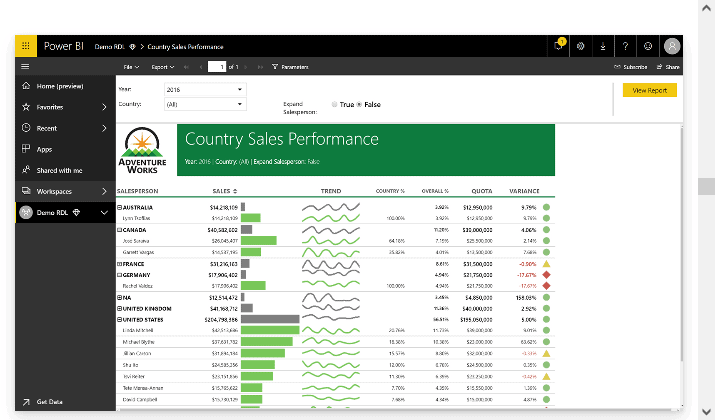
Sisense employs APIs and other extra tools to allow you to interact with the Sisense platform. These tools offer you an opportunity to manage, customize, and enhance your functionality and experience.
The applications include Amazon Redshift, Google Spreadsheets, Heroku Postgres, QuickBase, Salesforce, Zendesk, Google Analytics, and Google Adwords.
However, Power BI integrates with applications, such as Comscore, MailChimp, Microsoft Excel, GitHub, Adobe Analytics, Salesforce, Microsoft Dynamics, Circuit ID, Acumatica, Google Analytics, and Azure Mobile Management.
Sisense vs Power BI: Size of Target Customer
Sisense is appropriate for large and medium enterprises.
On the other hand, the target customer size of Microsoft Power BI includes small, medium, and large enterprises.
Sisense vs Power BI: Languages Supported
Sisense supports various languages compared to Power BI. These languages include Spanish, Russian, Dutch, Japanese, French, English, German, Italian, Chinese, and Portuguese.
On the contrary, Power BI only supports the English language.
Sisense vs Power BI: Supported Operating Systems

Sisense is present in both Windows and Linux. But if you use Android, iPhone, iPad, or Mac, you can still install and enjoy using Sinsense on your device.
On the other hand, Power BI can only be used on android, iPhone, iPad, Windows, and Windows mobile.
Also Read: SAS vs Power BI
Power BI vs Sisense: Pricing Model
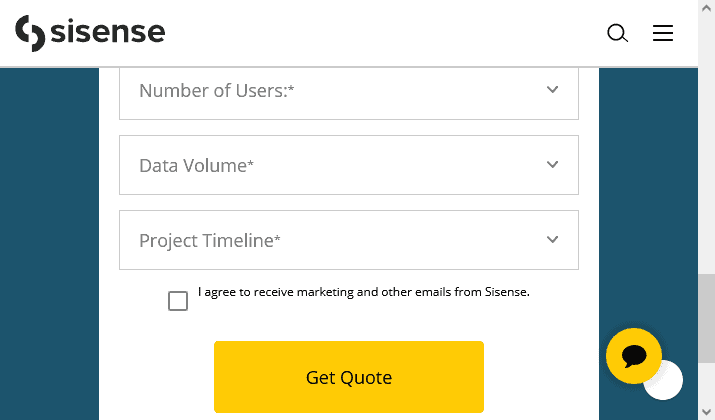
The price of Sisense is supplied based on a quote. The seller provides a customizable and adjustable annual pricing plan for enterprises of all forms and dimensions.
Upon request, specific pricing is available. You will receive an estimate suited to your exact needs, depending on the size of your firm and the scale of your operation.
An excellent free trial plan is also available to test the program’s capabilities and determine how beneficial it may be for your business.
On the other hand, Power BI has two versions with different prices. Power BI Pro & Premium. Power BI Pro costs $9.99 per user per month, and Power BI Premium costs $20 per user per month and $4,995 per capacity per month.
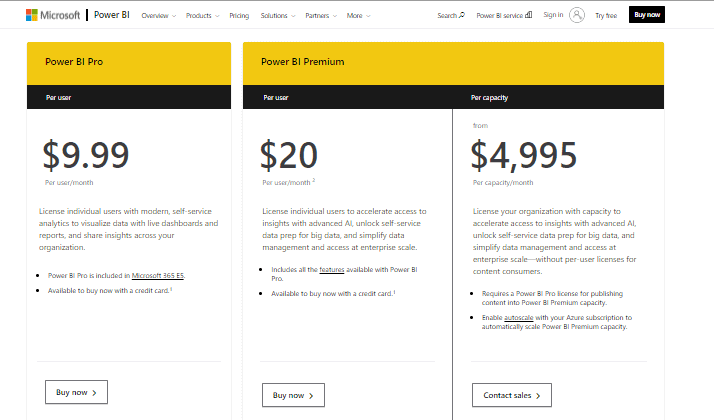
In conclusion, Power BI is cheaper compared to Sisense.
All you need to do is to take a close look at the two plans and choose the one that best fits your company.
Sisense vs Power BI: Pros and Cons
Pros of Sisense
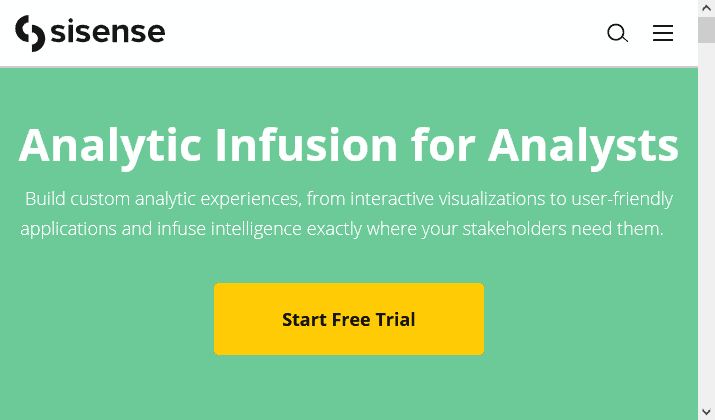
- The technical support is excellent and the onboarding process is simple.
- Sisense has incredible customizability thanks to a large number of plugins and API connectivity options. JavaScript allows you to change the look and feel of the site.
- Sisense is continually evolving and introducing new features.
- Even non-technical people will find the user interface to be very intuitive.
- Solid backend architecture and the platform are extremely fast.
- Data cubes are separated from their original data sources and kept on a disk, ensuring that querying activity has no impact on data in source databases.
- Within ETL, there is a visual ETL and UI for data linkages and modeling.
- Data changes and updates happen quickly.
- Sisense can show data in various ways, including tabular and graphical, without the need for scripting.
- A single ‘elasticube,’ or back-end data source, can collect data from a variety of sources. Sisense connects to over 20 different back-end technologies, including all of the most popular databases and flat file types. The ‘elasticube’ might include a query that combines data from multiple sources.
- The graphical front end allows you to filter the back end dataset at both designs and run time, allowing them to see only the data they need.
- It is easy to drill down to view more details of any portion of the database by linking graphical displays.
Pros of Power BI
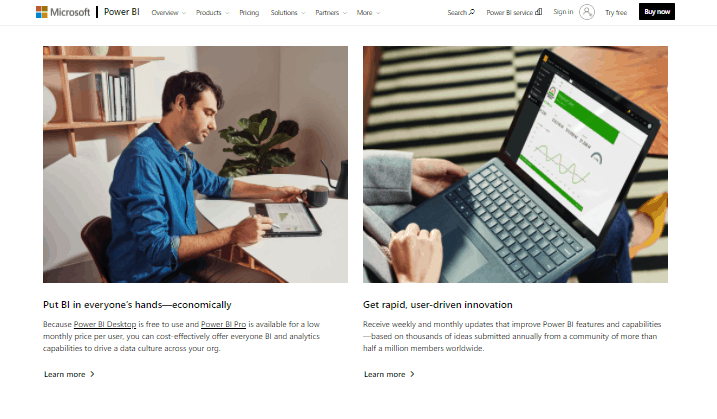
- It is free to use if you wish to produce reports for yourself. One individual might generate datasets, dashboards, and reports in Power BI and offer the Power BI files to co-workers to utilize for their analysis. Each employee would have a copy of Power BI and would need to keep the data and reports individually.
- Second, it’s straightforward to use Power BI. Basically, it’s Excel pivot tables plus Excel data viewing features taken to the next level. When data enters a Power BI dataset, it is not so complicated to build charts, diagrams, and tables that make sense of data. Anyone can identify it with average Excel abilities.
- Third, Power BI interfaces with hundreds of data sources. Power BI can read Microsoft Excel data and XML and JSON text files.
- Next, Microsoft offers monthly Power BI updates. More and more significantly, the user community is listened to by Microsoft.
- The option to save data to Excel is another wonderful feature of Power BI. Even if a data visualization tool is so large, people still want the data to be analyzed using Excel.
- Finally, while constructing the information table above, Power BI has plenty of tools and widgets that enable the data to come alive. Visualization helps make business decisions with data science.
Check Out: How To Use Power BI On Mac
Cons of Sisense

- When your data starts to grow large, cubes become incredibly sluggish.
- Admins cannot currently update the dashboards of each other. This becomes quite problematic when changes are administered. In other words, you need to duplicate and republish dashboards to take over.
- Maps can be better done. It would be pretty good to compare some conventional benchmarks such as population density, demography, GDP, etc.
- You need to obtain the Linux version out of beta. It is not much to run a Windows Server. However, it requires more resources if you solely establish a team on Linux.
- Issues of random stability.
- Visualizations and reporting are a little too simple compared to the leaders of the market.
- Concurrent cube scalability is a problem since it does not manage to generate more than three cubes at a time on high memory availability servers.
- Mobile systems are gloomy rather than as intuitive as the desktop version. I would also urge that the dashboards be viewed on a mobile device.
- Sisense should work on the layouts to improve the user experience in the mobile version, which might benefit from additional navigation and filtering options.
Cons of Power BI
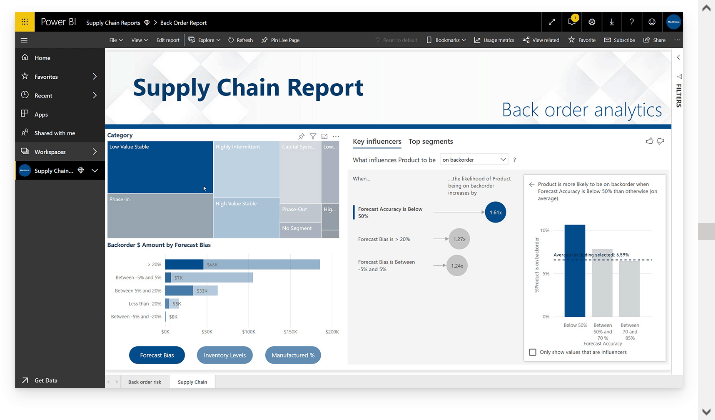
- Power Bi offers a vast user interface. Windows with side par and formula help often impede the vision of vitality. Scrolling dashboards could take a lot of effort, but it would be amazing if it were a native function.
- Power BI has some limits. You can produce new data with formulas, but there are limits. There is also a concatenate statement, but only two items are combined.
- The ability to work with vast amounts of data is another problem. Power BI has a limit on how much data it can use. (I believe it’s roughly 2GB).
- Although the indigenous visuals and most customized visuals cannot be changed, often there is a desire to optimize a visual, yet what may be modified has constraints.
- This is one of the critical disadvantages, as Microsoft has a highly complex constructed Power BI. The Power BI includes a vast number of components, and the component you require is difficult to understand. To mention a few, Power Bi Desktop, Power BI Gateway, Power BI services, etc., are available.
- The technique helps window and side portions often obstruct the view of the crucial aspect and makes the Power BI user interface quite dense. The creation of the dashboard requires a lot of effort because it is not an indigenous feature.
- Power BI may sometimes suffer performance problems as it was realized that it could not handle more than 20000 to 30000 rows without various queries. It could only take time during processing.
- To avoid experiencing this problem, you can write several queries to cover the entire data spectrum and divide them by date.
Power Bi vs Sisense: Similarities and Differences
| Power Bi | Sisense | |
| Ad hoc reporting | ✓ | ✓ |
| Benchmarking | ⨯ | ✓ |
| Dashboard | ✓ | ✓ |
| Key performance indicators | ⨯ | ✓ |
| Performance metrics | ⨯ | ✓ |
| Publishing/sharing | ⨯ | ⨯ |
| Profitability analysis | ⨯ | ✓ |
| Scorecards | ⨯ | ✓ |
| Predictive analysis | ⨯ | ✓ |
| Visual analytics | ✓ | ✓ |
| Trend/problem indicators | ⨯ | ✓ |
| Free Trial | ✓ | ✓ |
Power BI vs Sisense: FAQs
What Makes Sisense Unique?
Sisense uses disk, RAM, and CPU so effectively that a single commodity server can crunch gigabytes of data on cheap hardware and serve enormous numbers of competitors.
How Do Power BI Pro and Power BI Premium Differ?

Power BI Pro is a single-user license allowing access to all Power BI Service content and capabilities. You can even exchange content and work with other users of Pro. Pro users can only post their material, share dashboards, and subscribe to dashboards and reports in other workplaces.
Power BI Premium has a better performance capability. It also supports higher Power BI data volumes. Premium enables the extensive dissemination of the contents of each user by Pro users and does not require pro licenses per user for the receivers who see the contents.
This allows business users to communicate with colleagues, view and interact with dashboards, reports, and apps that they share.
How Good Is Sisense?
Good: fast implementation and insight time, unique in-chip technology procedures easily handle the volume of data flowing from multiple data sources, deliver top-notch customer experience, and high customer satisfaction rankings.
Which Feature Makes Power BI Unique?
Distinct is the group-by-action input parameter, the sub-table for each group. And it gives you the definite number for the columns SalesOrderNumber. This means the input table and the SalesOrderNumber is the column we would want to have unique values in the list.
Does Power BI Need To Be Coded?
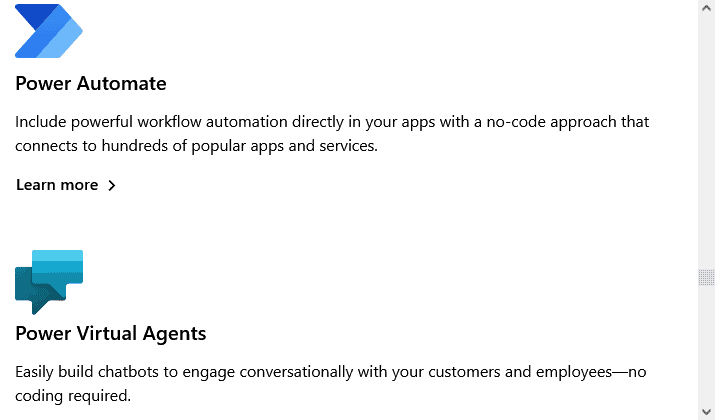
To study or operate with Power BI, you do not require any coding knowledge. However, if you want to work further beyond the primary Power BI graphical user interface (GUI), you could check DAX, R, or M to perform your job.
What Is the Role of Data Storage in Corporate Intelligence?
Data storage is an ever more significant instrument for business intelligence that enables firms to ensure consistency. The standardization of data from many sources also decreases the chance of interpreting errors and enhances overall accuracy.
You are also able to make smarter decisions about a business.
Also Read: Best Books For Power BI
Sisense vs Power BI: Which is Better?
As we have seen, these tools are great to use. However, since they play nearly similar roles, you need to decide on one that suits your needs.
If I were to choose, I would go for Sisense.
You can use it to collect information from all your sources and combine them into a single repository.
The app’s sophisticated visual reports can be utilized to conduct intelligent analyses and it enables you to share your thoughts with your team members and clients.
It also offers an easy-to-use interface that even non-techies can rapidly learn. Plus, Sisense is a fast tool as it uses a 64-bit computer, parallelization, and multi-core CPUs.
Besides, Sisense supports many languages compared to Power Bi, which only works with English.
Similarly, Sisense can work on several operating systems, including Windows, Linux, iOS, and Android. Power Bi isn’t compatible with Mac or Linux.
Not to mention, the data updates on Sisense happen quickly,
It’s for these reasons that I recommend trying Sisense for hassle-free data analysis.

Scott L. Macarthur is a marketing consultant and an online author. He is mostly engaged in providing his expertise to startups and SMBs. He is also an author on TheNextWeb.
